Reloader's Press
S&W .357 Magnum
column By: Dave Scovill | October, 18
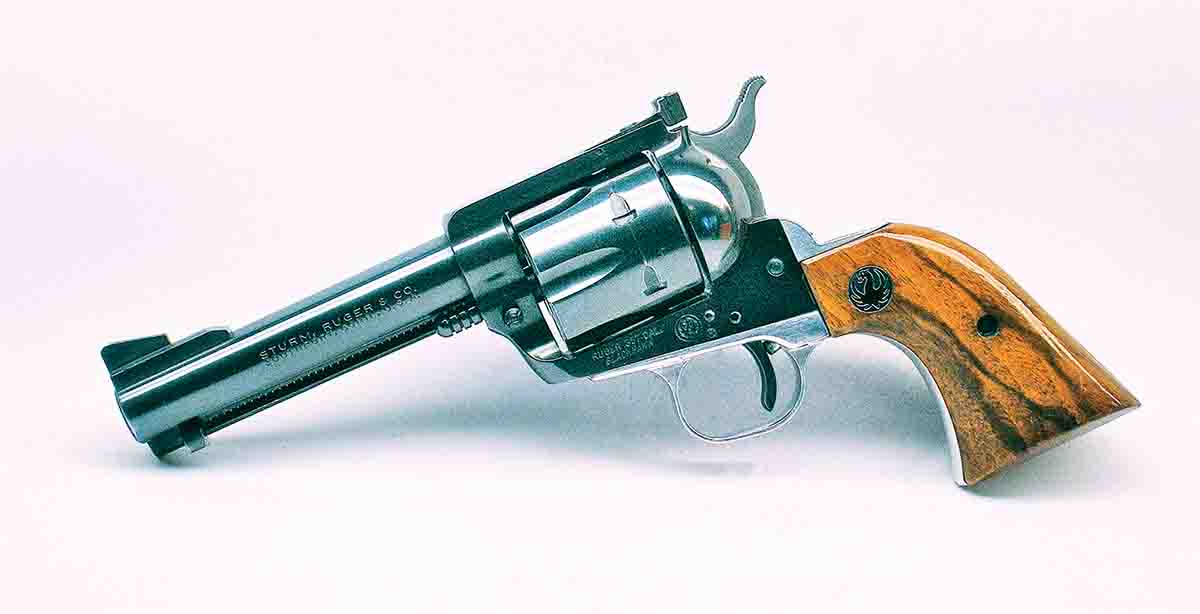
Shortly thereafter Dean drove up a nearby logging road, pulled over at a wide spot, pried the Ruger from my hands and dumped a few rounds from the cartridge box. Dean demonstrated how to load the Ruger, cock it and pull the trigger, cautioning that it was best to hold it with both hands. He fired a few rounds first, leaving my ears ringing and nerves in shock, then handed the Ruger over with a few cartridges, advising to hang on tight.
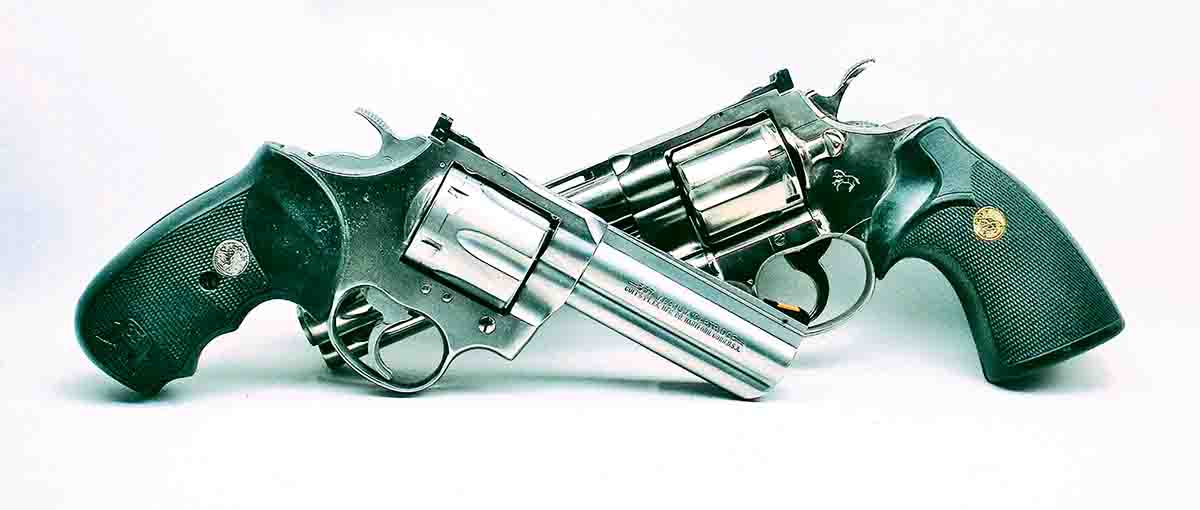
Mindful of the painful ear ringing and muzzle blast produced by the Ruger .357 Magnum, it was pretty easy to ignore the occasional Ruger and/or Smith & Wesson .357 Magnums that showed up at gun shows and in various gun shops over the years. As fate would have it, however, a Ruger Blackhawk .357 (three screw, old model) with a 45⁄8-inch barrel showed up at a gun show with a rock-bottom price. It was in good shape and, if nothing else, might serve to convert to .44 Special, a conversion I read about in a couple of magazines in the mid-1970s.
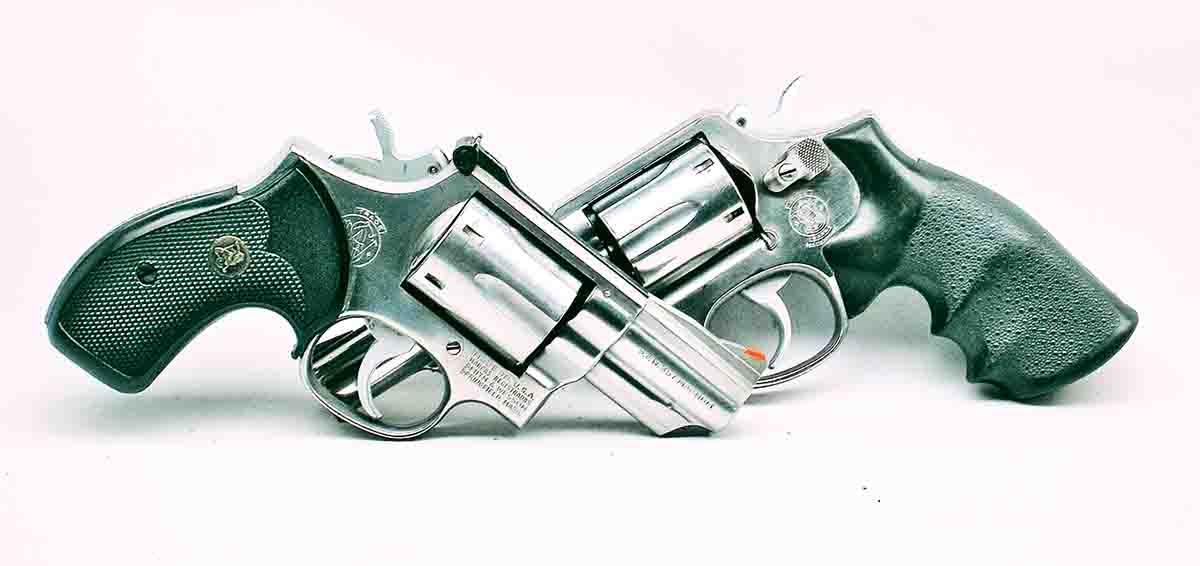
Test loads with the Lyman/Keith No. 358429 solidnose 174-grain semiwadcutter with a Brinell hardness number (BHN) of 13 were fired from a Ruger Blackhawk with a 45⁄8-inch barrel into a box of soaking wet newspapers at 25 yards with an impact velocity of just under 1,100 fps. Penetration was on par with most deer rifles, e.g., .270 Winchester, 7mm Mauser and 7mm Remington Magnum with 150- to 160-grain jacketed softpoints, roughly 12 to 14 inches, and 16 inches for the Hornady 154-grain pre-InterLock fired at 2,700 fps from the 7mm Mauser.
A few years after I joined the Wolfe Publishing staff as editor of Handloader and Rifle, publisher Mark Harris reprinted a book titled Smith & Wesson Hand Guns by Roy C. McHenry and Walter F. Roper. The former was a recognized author and authority in the firearms field at the time the book was published in 1945 (reprinted by Wolfe Publishing in 1994), and Roper was well known for his handgun stock designs and target shooting expertise, and at one time he was an employee of Smith & Wesson.
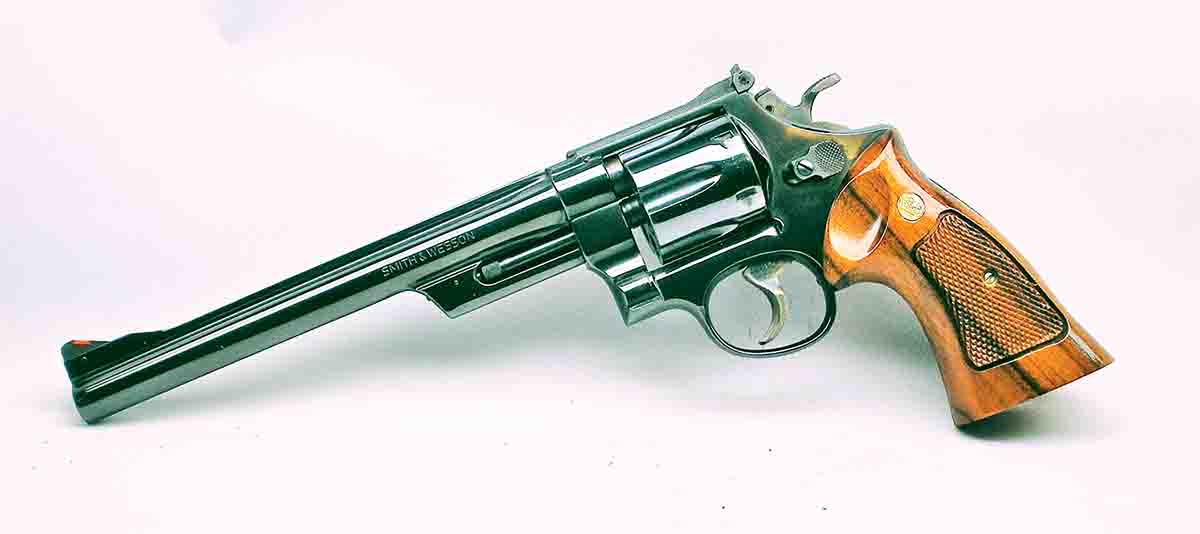
For the whole story, we have to go back to an earlier chapter in the book that mentions an effort by the U.S. government to develop body armor for troops during World War I. The powers that be at the time decided body armor wasn’t effective against rifle fire, so it made little sense to be concerned about defeating handguns bullets. So, at the end of the war the body armor was sold off as surplus, whereupon the big-city gangsters discovered that it protected them against all but the 130-grain full jacketed bullet at 1,300 fps from the Model 1911 .38 Super ACP, but easily defeated the original 1902 .38 ACP that launched the same bullet at 1,100 fps, that latter of which just happened to be the same velocity offered by the .38-44.
According to McHenry and Roper, Colonel Wesson was obsessed with the idea that the Colt 1911 .38 Super would defeat body armor, and it fired the 130-grain slug 200 fps faster than anything Smith & Wesson had on the roster.
The real problem for Smith & Wesson was that its highly regarded .38-44 load would not penetrate body armor, albeit the metal-capped bullet would shoot through most car bodies and damage engines.
One can only imagine Elmer Keith and Doug Wesson huddled up over a bottle of good scotch trying to develop a cartridge that would shoot a 158-grain bullet with sufficient velocity to penetrate bulletproof glass and body armor. It is not clear who came up with the idea of lengthening the .38-44/.38 Special case about .10 inch to accommodate more gunpowder, which at the time was a non-canister version of Hercules 2400.
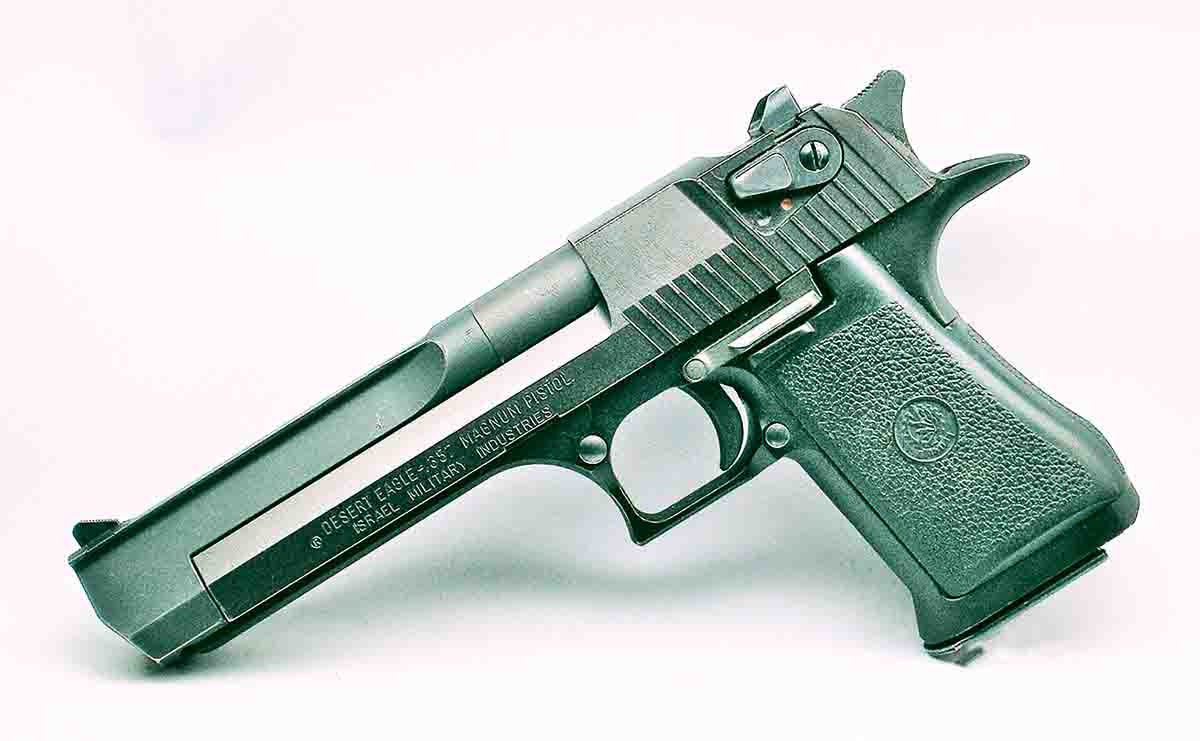
The rest of the .357 Magnum story is fairly well known among handgun enthusiasts, except that Winchester developed the first loads, not Remington, and does not explain why the S&W .44 Remington Magnum is well known but the S&W .357 Winchester Magnum is not. Go figure.
Either way, the .357 Magnum “Registered” revolver featured an 83⁄8-inch barrel and heat-treated, nickel-steel cylinder to withstand the 40,000 psi load with recessed chambers reminiscent of the first S&W smokeless .22 Long Rifle revolver’s recessed chambers that were designed to protect the shooter from busted case heads. The ribbed barrel was purloined from the early Russian model to add weight, but it seems to have disappeared from shorter barrels sometime prior to 1940, when advertisements offered a choice of lengths: 3.5, 5, 6, 6.5 and 83⁄8 inches. Weight with the 83⁄8-inch barrel was 42 ounces. Single-action trigger pull was 3 to 4 pounds, 10 pounds for double action.
Early on, designers changed the stock to help abate felt recoil at the top of the backstrap, listed as checkered Magma stocks. Folks who placed an order for the new revolver, until 1939, had a choice of Target or standard sights. Afterward, most (all) guns were sold through wholesale outfits with Target sights.
Shortly after production of the .357 Magnum began, mostly by hand to work the “bugs” out, Maj. Douglas Wesson repaired to the West to shoot an elk, which some reports suggest was taken at extreme rifle range (whatever that means), along with moose and deer. A year later he bagged a grizzly. None of the reports reveal the number of shots used to take the elk, moose or grizzly, but Wesson was convinced he had the “ideal” hunting handgun. In his book SIXGUNS by Keith, the author states the .357 Magnum was the only cartridge “we consider an adequate man stopper under all conditions.” Keith also spoke highly of the high-velocity, metal-tipped .38-44 swaged lead bullet, stating it “. . . will give extreme penetration, but very little shock. It will penetrate the brain of a big grizzly or a domestic bull, but has to be placed right to do so.” High praise from the wiry cowboy from Idaho with the tall Stetson.
Shortly after the new S&W .357 Magnum entered the market in 1935, Major Wesson’s old nemesis added the cartridge to the Colt Single Action Army and New Service. Within a few years it was nearly impossible to find a state trooper, sheriff or federal officer who was not armed with a Colt or Smith & Wesson .357 Magnum.
At the end of the discussion of the .357 Magnum in the McHenry/Roper book, the subject of a .44-caliber revolver along the lines of the new magnum revolver suggests it would be too heavy to hold at arm’s length, i.e. standard target shooting position, and too powerful to hold. One can only imagine what Keith’s response to that might have been.


